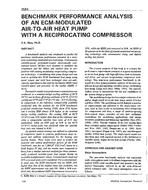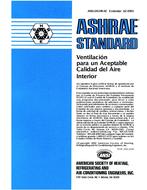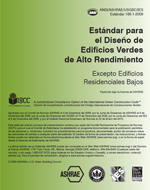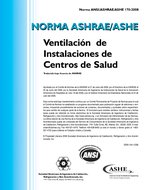Description
A benchmark analysis was conducted to predict the maximum steady-state performance potential of a near-term modulating residential-size heat pump. Continuously variable-speed, permanent-magnet electronically commutated motors (ECMs) were assumed to modulate the compressor and the indoor and outdoor fans in conjunction with existing modulating reciprocating compressor technology. A modulating heat pump design tool was used to optimise this ECM benchmark heat pump using speed ranges and total heat exchanger sizes per-unit-capacity equivalent to that used by the highest SEER-rated variable-speed unit presently on the market (SEER = 16.4). Parametric steady-state performance optimisation was conducted at a nominal design cooling ambient of 95 deg F (35 deg C) and at three off-design ambients of 82 deg F (27.8 deg C) cooling and 47 deg F and 17 deg F (8.3 deg C and -8.3 deg C) heating. In comparison to the reference commercially available residential unit, the analysis for the ECM benchmark predicted steady-state heating COPs about 35% higher and a cooling EER almost 25% higher at the nominal design cooling condition. The cooling EER at 82 deg F (27.8 deg C) was 13% higher than that of the reference unit when a comparable sensible heat ratio of 0.71 was maintained, while an EER gain of 24% at the 82 deg F (27.8 deg C) rating point was predicted when the sensible heat ratio was relaxed to 0.83. An optimal control strategy was defined as a function of compressor speed to generate performance maps vs. speed and ambient temperature for the heating and cooling modes. These maps were used to predict the seasonal and annual performance factors of the ECM benchmark case for an 1,800 ft2 (167.2 m2) house in a DOE Region IV city, and the results were compared to those from a similar seasonal analysis for three commercially produced variable-speed heat pumps (based on available manufacturers’ data). Conventionally sized and 50%-oversized units were considered. For a conventionally sized unit, the ECM benchmark had an SEER 29% higher than that of the highest rated unit available, but the HSPF improvement was only 8%. With a 50%-oversized unit, the predicted HSPF improvement increased to 19%, while the SEER gain remained at 29%. An SEER of 20 appears to be the limit of present modulated reciprocating technology with conventional sizing and default cycling loss factors.
KEYWORDS: performance, electronic, modulated, air air heat pumps, steady state, reciprocating compressors, domestic, heat pumps, variable speed motors, optimisation, heat-exchangers, efficiency, computer programs, calculating
Citation: ASHRAE Trans. 1992, vol.98, Part 1, Paper number 3584, 430-450, 14 figs., 7 tabs., refs.
Product Details
- Published:
- 1992
- File Size:
- 1 file , 2.2 MB
- Product Code(s):
- D-17825




